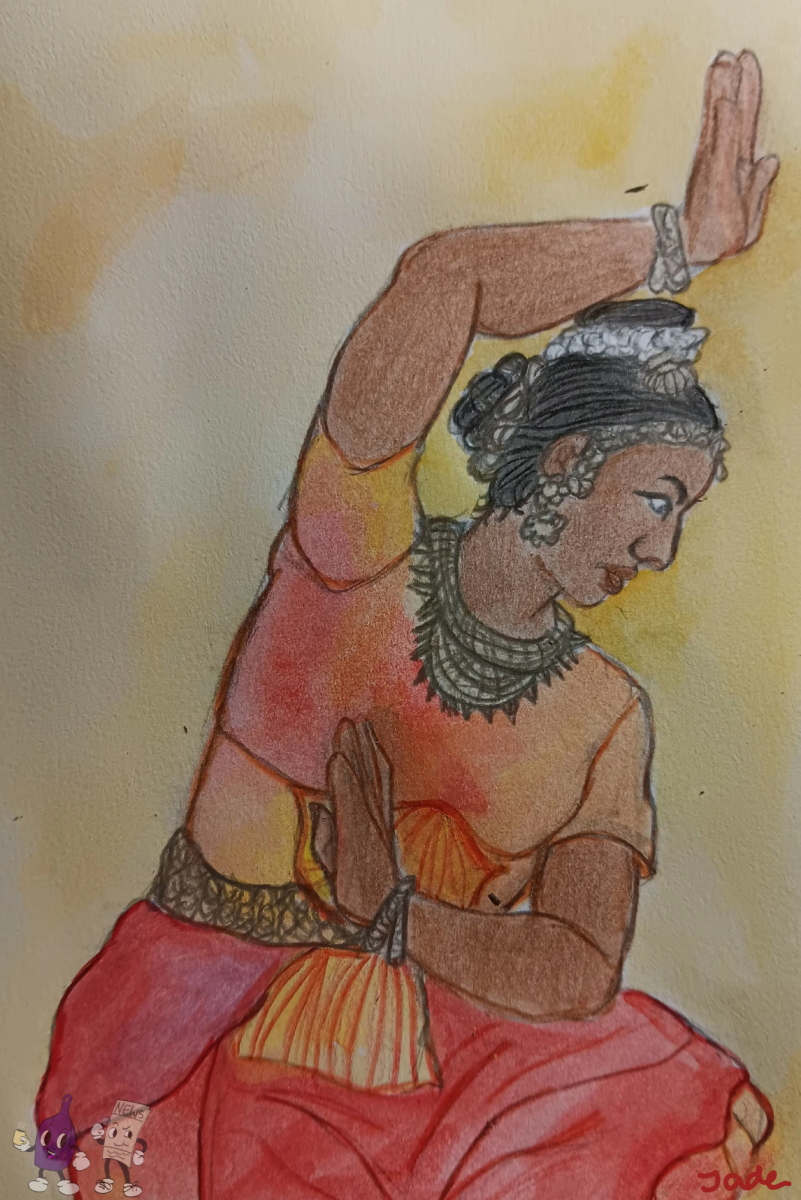India is known to have an incredibly rich and diverse culture of gold and silk. The immense diversity of this culture came mostly from the three core religions of the country: Hinduism, Buddhism, and Islam. India’s artwork is not only famous for its variety, but also for its consistency. The art style in India’s paintings, sculptures, and architecture has had a notable presence since the time of its cave paintings.
Architecture, like nearly all of ancient Indian art, was created for religious purposes. India had many historical structures that, similarly to China, had been made out of wood and decomposed over time. However, over millions of years, structures began to be created out of rocks much more often, and their durability has left lasting examples of the innovative art.
The architecture of India hit an artistic peak in the time between 321 B.C.E. and 185 B.C.E.. During this time, the Maurya Empire thrived; along with this empire came a strong influence of Buddhisim, bringing stonework and pottery to the forefront of Indian art and architecture.
A notable creation during the increase in stone usage are stupas. The stupas are reliquaries, shrines with the remains of a sainted person that often contain artifacts. They originated in India as tombs for holy men but slowly became sacred sites to honor the Budda and Buddhist saints or arhats.
Far in India’s future, during the 7th century, roughly 300 years after the stupas were invented, they pioneered another unprecedented example of architecture. In order to harbor water for drought-prone regions of India, the stepwells were created.
The stepwells are, in simple terms, massive wells with patterned stairs descending many stories into the ground. They were used to both hold and maintain water during times when there was a plethora, such as monsoon season, as well as to keep the water from evaporating during hot seasons. Due to the depth of the wells, the water would never get hot enough to dissipate.
Many stepwells were not only used for their practical functions but also as massive works of art. Intricate murals can be found on wells, such as the Chand Baori. In the stepwell, there are many sculptures and carvings depicting stories from Hindu mythology.
While murals in India are common on temples and stepwells, they derive in caves and rock-cut caverns. The Ajanta murals are one of the oldest examples of Indian painting, dating back to 300 B.C.E.. Ajanta’s paintings tell the story of the Budda similar to the temple Bubodur in Indonesia. The murals in this cave were created in two distinct time frames, the first being between the first and second century B.C.E..
During the first painting schedule, unlike much of Indian artwork, religious figures are evidently missing. In their place, flowers, animals, and geometric shapes are predominant on the ceiling of the chamber. Further separating the murals from their prehistoric counterparts, the paintings often featured colors like yellows and blues as well as detailed shading to add a three-dimensional feeling to the art.
In the second, which focuses mainly on the walls, religious emblems are much more notable. Murals on these stones from the first time period are difficult to discern due to the damage over time. The religious motifs on the walls depict Buddhist symbols like the Bodhi tree and the story of the Jatakas, tales of Budda’s past lives.
Many aspects of Indian art are based in Buddhist tales, another very prominent religion in the culture is Hinduism. The Hindu gods and goddesses are often known for their love of dance and drama, and many of the gods have specific dances that relate to them: Shiva, the god of destruction, with his cosmic dance known as Tandava, with his wife Kali’s dances to match.
Dance in India has roots leading back to the Mesolithic period. A bronze figurine of a dancing girl was discovered in the Indus Valley at Mohenjo-Daro dating back to at least 6000 B.C.E.. Representations of Indian dances have also been seen in cave paintings and sculpture in temples.
The first official mention of dance was in the Natya Shastra, and is considered to be the most thorough collection of information on Indian drama of all varieties. It discusses the posture or mudras, the emotion, ornaments, stage, and attire, as well as nearly every other possible aspect of live performance. According to the Natya Shastra’s mythos, Lord Brahma, the Hindu god of creation, was requested to create a recreational activity by the gods, so he created drama.
Many gods, like Brahma, are celebrated throughout India. On the 14th of January every year, there is a harvest festival called Pongal to celebrate the sun god, mother nature, and all the animals that contributed to the festival. The people of Tamil Nadu in southern India celebrate this day with singing, feasting, and dancing.
Some of the sacred dances performed on this day include Kummi, Karakattam, and Oyil Kummi.
Kummi is the most popular dance on Pongal, it is also thought that this dance came to be before even the invention of music making it the oldest dance to exist. During the dance, women create a circle and clap their hands rhythmically. Oyil Kummi, similar to Kummi, is performed by men without any music in all temples during the festival. Karagattam is a famous folk dance in Tamil Nadu that can be performed alone or with a partner where the dancers balance a pot upon their heads while they dance.
The festival is similar to the New Year, so on that sacred day, it is customary to smash or break any old pottery in the house and replace them with fresh ones. Pottery in India, as in many places of artistic history, has many rich traditions. Some of the earliest examples of India’s clay making history dates back to the Harappan people, or Indus Valley civilization who made pots and pans with baked red clay decorated with animals and plants as well as other motifs on occasion.
There are many different forms of pottery that are traditional to India, most of them are created with classic red clay and glazed in beautiful patterns with delicate designs. One that doesn’t use red clay is the Black Clay Pottery, which is only created in Azamgarh in Uttar Pradesh. It’s made with soil found exclusively in the Nizamabad area and contains trace amounts of zinc, giving it a gorgeous black finish.
In the 16th century, Mongol artisans were said to have combined their Chinese glazing technology with the decoration of the Persians, and one hundred years later, that style was brought to Jaipur in India and became known as Jaipur Blue Pottery. The technique, as the name suggests, involves delicate illustrations across the clay created with glaze, often featuring the colors blue, green, and white, in a style similar to a mandala.
India’s artwork has been prominent and elegant for centuries. Many of these traditions are continued to this day and can be observed throughout the country, and even throughout the world. The connection of various religions and cultures in India created a beautiful and singular civilization.





